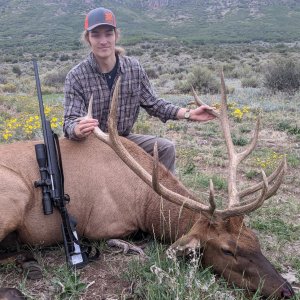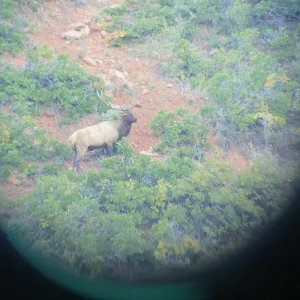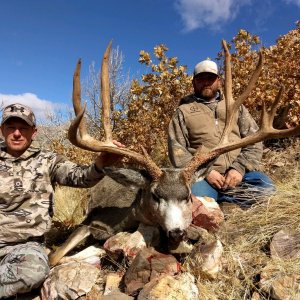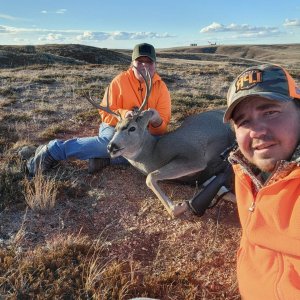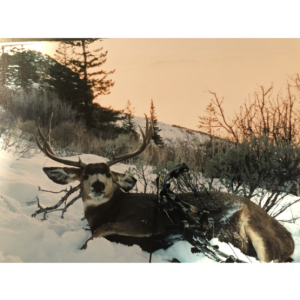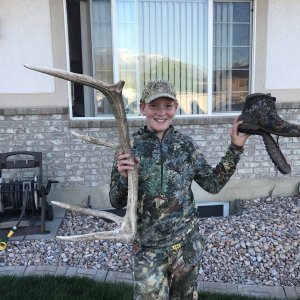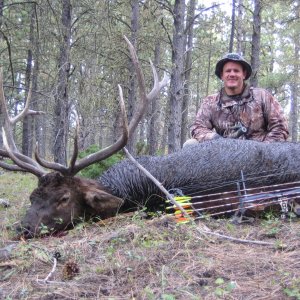You are using an out of date browser. It may not display this or other websites correctly.
You should upgrade or use an alternative browser.
You should upgrade or use an alternative browser.
Who anneals
- Thread starter marley
- Start date
Weiserbucks
Very Active Member
- Messages
- 1,659
I've been to cheap to get setup, but it's going to happen. Many people are annealing every firing for consistency and long brass life.
Captain_coues
Very Active Member
- Messages
- 1,449
I do it. I use the Bench Source annealer and do it every time for a few cartridges but it’s not uncommon to skip a session so I would say I’m at 80-90%.
Chesterwyo
Very Active Member
- Messages
- 1,539
Every four shots or so on everything except 5.56. That doesn’t get annealed.
Zeke
Long Time Member
- Messages
- 10,603
Every time right before I pin tumble for everything except 20 calibers.
For the 20's, the bullet slides in a bit easier, without deforming, after the first firing. I do those about every 3-4th and have to dry lube the bullets the first loading after annealing even with a pretty loose sizer bushing.
Zeke
For the 20's, the bullet slides in a bit easier, without deforming, after the first firing. I do those about every 3-4th and have to dry lube the bullets the first loading after annealing even with a pretty loose sizer bushing.
Zeke
Zeke
Long Time Member
- Messages
- 10,603
Must have no value then?Never have. mtmuley
I can honestly say that I never had until I did.
Zeke
Not sure the value would be worth the cost and time. mtmuleyMust have no value then?
I can honestly say that I never had until I did.
Zeke
Captain_coues
Very Active Member
- Messages
- 1,449
I do it for both reasons and have only been doing it for two years, before that, I never did it. I have noticed an improvement in accuracy for some of the small rifles. I don’t feel good linking it to just the annealing. I do other steps along with annealing that I think are required. Some of them are brushing the inside of the necks and chamfering each case. Those steps and switching to bushings helped a little with more consistent neck tension on some of them and I discovered that on the labradar. I have done lots of those things for the 223 REM and haven’t on some of the others. I would love to have the AMP press and computer to check just how good they really are.
I got into it for two main cartridges and now do just about everything. I won’t do the lever action cartridges and it seems weird to do the Weatherby cartridges although I have done some. Can’t see any improvements made on those. The 22 K Hornet and 338-06 AI are some of the ones that I felt needed it more than the others since they were fire formed and it’s nice to have as many of those survive as long as possible.


I got into it for two main cartridges and now do just about everything. I won’t do the lever action cartridges and it seems weird to do the Weatherby cartridges although I have done some. Can’t see any improvements made on those. The 22 K Hornet and 338-06 AI are some of the ones that I felt needed it more than the others since they were fire formed and it’s nice to have as many of those survive as long as possible.
Last edited:
marley
Very Active Member
- Messages
- 2,461
I ask because I've owned an annealer for 3 years and yesterday was the first time I've ever used it. Fire forming brass is a pain in the butt so if it will prolong the use of the brass I'm all for it. If it adds to the accuracy that's a bonus too. I was surprised at how easy and fast it was to do. Only took me about 10 minutes to do 100 pieces.
Zeke
Long Time Member
- Messages
- 10,603
I've done it for 4 years or so and it's so fast that it's actually fun and very hypnotic to watch it turn them out in 6 seconds each!
Yes, there is an investment to begin with but the time spent is virtually nonexistent.
It makes the neck tension more consistent so yes, it does both (accuracy and longevity).
I didn't know what I was missing!
Zeke
Yes, there is an investment to begin with but the time spent is virtually nonexistent.
It makes the neck tension more consistent so yes, it does both (accuracy and longevity).
I didn't know what I was missing!
Zeke
marley
Very Active Member
- Messages
- 2,461
I agree on the hypnotic thing. When I was done I was looking around for something else to anneal haha. I will say that the little pan the annealer came with that catches the brass was definitely not big enough and in a panic once it filled up I burned myself a couple times trying to replace it with something else to catch the flaming hot brass. I excel in the school of hard knocks
Zeke
Long Time Member
- Messages
- 10,603
That's funny because I've done the same!I agree on the hypnotic thing. When I was done I was looking around for something else to anneal haha. I will say that the little pan the annealer came with that catches the brass was definitely not big enough and in a panic once it filled up I burned myself a couple times trying to replace it with something else to catch the flaming hot brass. I excel in the school of hard knocks
I use a metal bread loaf pan and have the annealer setup so the pan lip isn't too high. Much better
Best way to learn is the hard-knocks way!
Zeke
JPickett
Long Time Member
- Messages
- 3,730
Neck tensions affects on accuracy is pretty well documented and I’m sure a google search would give you more reading then you can do in a life time. A search for Chemical composition of brass and the affects heat have on it will do the same. That’s all kinda the whole idea behind itAnybody have proof it increases accuracy? mtmuley
Have I seen better/consistent neck tension have an improvement on accuracy. Yes
marley
Very Active Member
- Messages
- 2,461
I would think that would be difficult to prove although not impossible. But it is proven to maintain a consistent neck tension, preventing bounce back from brittle necks, which I would think would have to help. Any inconsistency decreases accuracy. Comp shooters go as far as sorting brass due to a couple grains difference in weight. Would that matter much in most hunting situations? No. But I do like to remove as many variables as possible so if I fail I can know that it was on me not my equipment.
Captain_coues
Very Active Member
- Messages
- 1,449
one way to prove it is to shoot a lot of 10 round groups of the unannealed and the same amount of annealed with everything else equal and measure them. It’s important to have a large sample instead of a few 5 round groups or you won’t see any results because they are small. I only save my best groups anymore so I only have memory to go off of when I shot all those years without annealing.
I anneal after every firing and do it for both reasons. Does wonders for ensuring consistent neck tension which lowers SD/ES and ultimately improves accuracy.For those that do anneal, are you doing so to get better life from the brass or to improve accuracy? Both? Million dollar question, has it accomplished those two things?
I average 3-4 more firings with annealing and with the price of good quality brass for magnum cartridges (as well as other components), I'll take what I can get.
littlebighorn
Long Time Member
- Messages
- 5,314
I loaded for almost 50 years without annealing, but once I got my Annealeez I now count it as the funnest part of the process.
Last go around I thought I was finished, put it all away and then found one more case on the floor. So I pulled it all out and set it up for that one case.
Kinda silly, the little things that make old men happy!
Oh and marley, those digits of yours are too valuable to burn, so go to Walmart and get a big bread pan for those T-Rex cases you are now forming!
Last go around I thought I was finished, put it all away and then found one more case on the floor. So I pulled it all out and set it up for that one case.
Kinda silly, the little things that make old men happy!
Oh and marley, those digits of yours are too valuable to burn, so go to Walmart and get a big bread pan for those T-Rex cases you are now forming!
Last edited:
Chesterwyo
Very Active Member
- Messages
- 1,539
Your bullet seating die is leaving some heavy marks on those Barnes bullets. Especially that one in the middle.I do it for both reasons and have only been doing it for two years, before that, I never did it. I have noticed an improvement in accuracy for some of the small rifles. I don’t feel good linking it to just the annealing. I do other steps along with annealing that I think are required. Some of them are brushing the inside of the necks and chamfering each case. Those steps and switching to bushings helped a little with more consistent neck tension on some of them and I discovered that on the labradar. I have done lots of those things for the 223 REM and haven’t on some of the others. I would love to have the AMP press and computer to check just how good they really are.
I got into it for two main cartridges and now do just about everything. I won’t do the lever action cartridges and it seems weird to do the Weatherby cartridges although I have done some. Can’t see any improvements made on those. The 22 K Hornet and 338-06 AI are some of the ones that I felt needed it more than the others since they were fire formed and it’s nice to have as many of those survive as long as possible.
View attachment 109918
View attachment 109919
Captain_coues
Very Active Member
- Messages
- 1,449
I know. I was nervous about showing them because of the response I may get. It’s was the most compressed load I have done before but it was the most accurate. 61 grains of IMR 4350. The Barnes couldn’t seat deep enough and I had to shoot them single shot because they were too long for the magazine. It yielded a ES of 16 on a 30 round batch.Your bullet seating die is leaving some heavy marks on those Barnes bullets. Especially that one in the middle.
Chesterwyo
Very Active Member
- Messages
- 1,539
Thought they looked pretty long. 210’s?I know. I was nervous about showing them because of the response I may get. It’s was the most compressed load I have done before but it was the most accurate. 61 grains of IMR 4350. The Barnes couldn’t seat deep enough and I had to shoot them single shot because they were too long for the magazine. It yielded a ES of 16 on a 30 round batch.
Captain_coues
Very Active Member
- Messages
- 1,449
225. The Speer next to them are also 225. Both had an average velocity of 2742 fps. I don’t really want to use the 225 grain and this was an effort to get rid of them. Not sure how or why I got them. My plan is to use the 180 grain Nosler or Barnes in that weight range in the future. I got about 500 pieces of 185 grain bullets from midway USA that were factory over run and they do well.
Cahunter805
Long Time Member
- Messages
- 3,348
What brand die? RCBS? You can remove the seating stem and lap it with a bullet/compound to get a much better fit also. Chalk it up in a drill and lap it.I know. I was nervous about showing them because of the response I may get. It’s was the most compressed load I have done before but it was the most accurate. 61 grains of IMR 4350. The Barnes couldn’t seat deep enough and I had to shoot them single shot because they were too long for the magazine. It yielded a ES of 16 on a 30 round batch.
Captain_coues
Very Active Member
- Messages
- 1,449
I think I will do that. I have the compound and others items. I have two die sets. The Redding 338-06 IMP 40° and the RCBS 338-06. The Redding stem works perfectly for the Sierra spitzer boat tails but not quite as good for the Speer or partitions but realWhat brand die? RCBS? You can remove the seating stem and lap it with a bullet/compound to get a much better fit also. Chalk it up in a drill and lap it.
close. The RCBS, I’ve only used for the new brass that hasn’t been fire formed and never really checked the fit of the bullets to the stem. I have tried to get different stems to fit or make work with other bullets, but having a hard time finding them but can find them for other cartridges. I still look into getting a new, completely different seating die with components. I’ve done that before and it helps.
I put together a induction annealer that I seen on youtube. Use one of the electric induction bolt heaters, with a off/on/off timer wired between the cord. The timer I have is adjustable to .01 seconds. I made up a board where the brass sets and then drops through a sliding door. Been annealing 6BR and 6.5 Creedmoor brass. Seems to help, at 500 yards, I seem to have less vertical.
My F class buddies have a device on his press that tells how much force is required to seat a bullet and claim more consistent numbers after annealing. ce61
My F class buddies have a device on his press that tells how much force is required to seat a bullet and claim more consistent numbers after annealing. ce61
JPickett
Long Time Member
- Messages
- 3,730
You got a link to the build?I put together a induction annealer that I seen on youtube. Use one of the electric induction bolt heaters, with a off/on/off timer wired between the cord. The timer I have is adjustable to .01 seconds. I made up a board where the brass sets and then drops through a sliding door. Been annealing 6BR and 6.5 Creedmoor brass. Seems to help, at 500 yards, I seem to have less vertical.
My F class buddies have a device on his press that tells how much force is required to seat a bullet and claim more consistent numbers after annealing. ce61
Yup, that's itI'm not your kid, at least I don't think soBut this is the video I believe:
Similar threads
- Replies
- 39
- Views
- 1k

